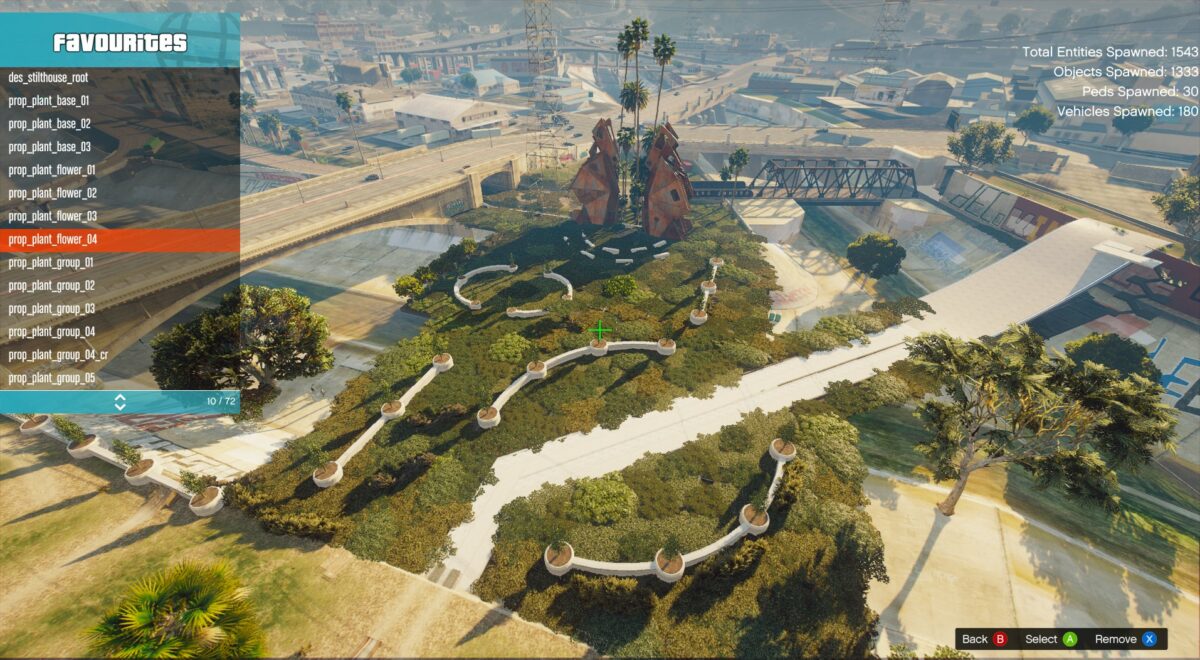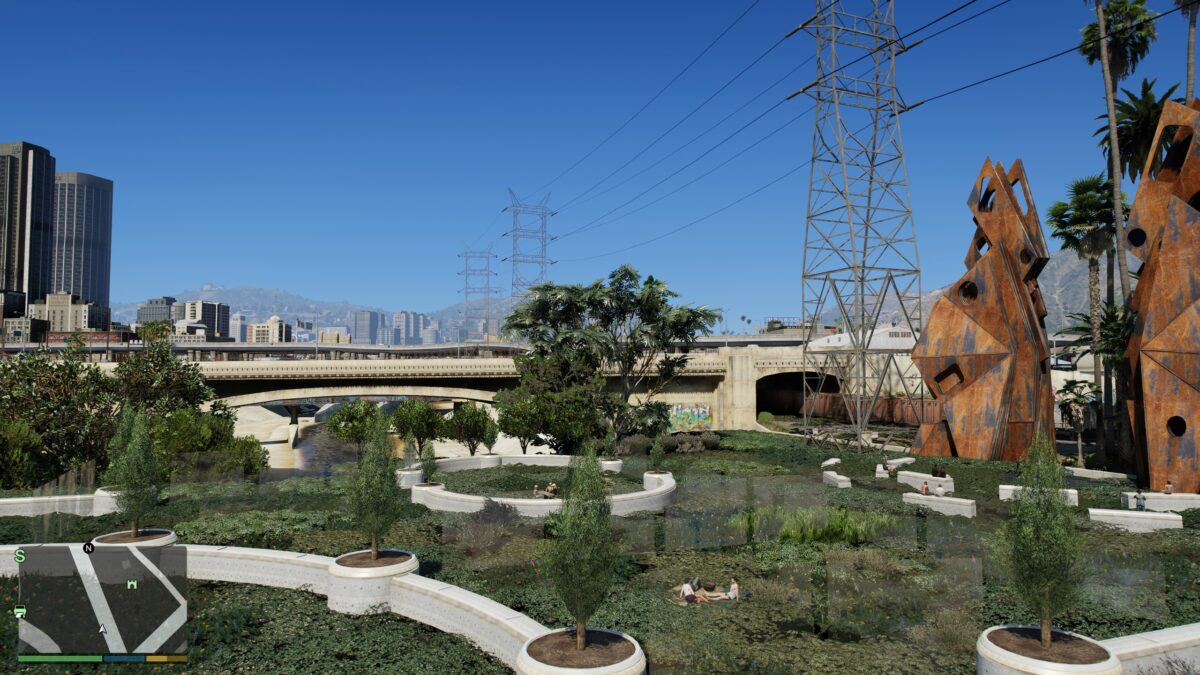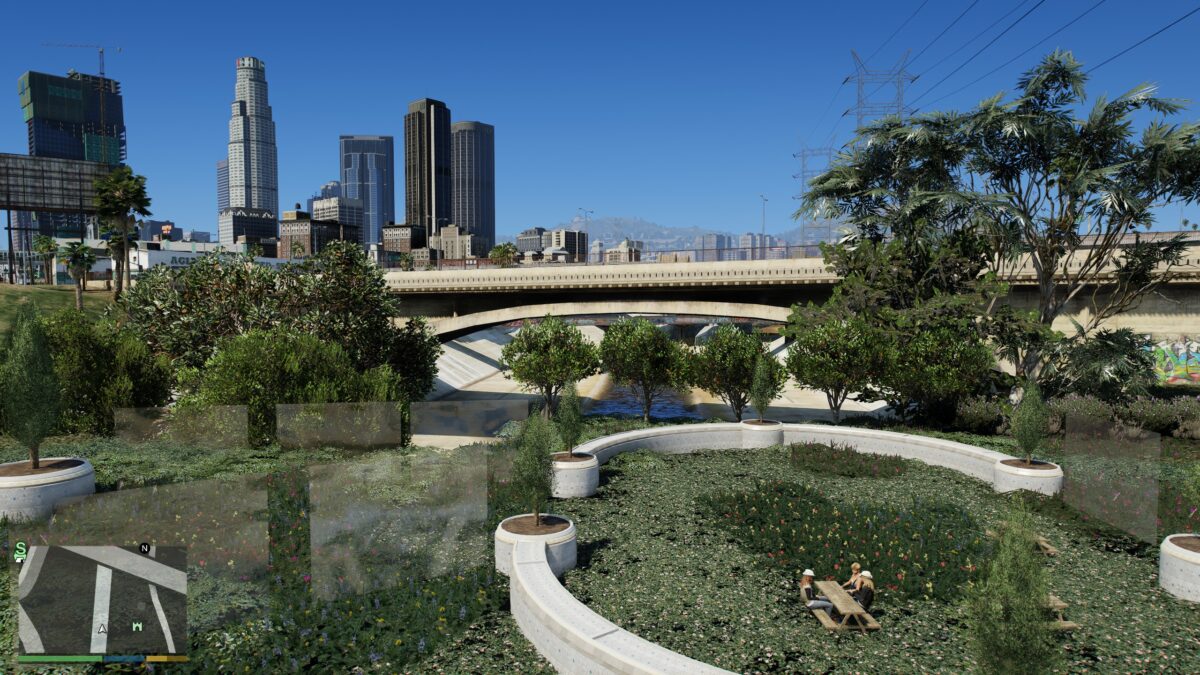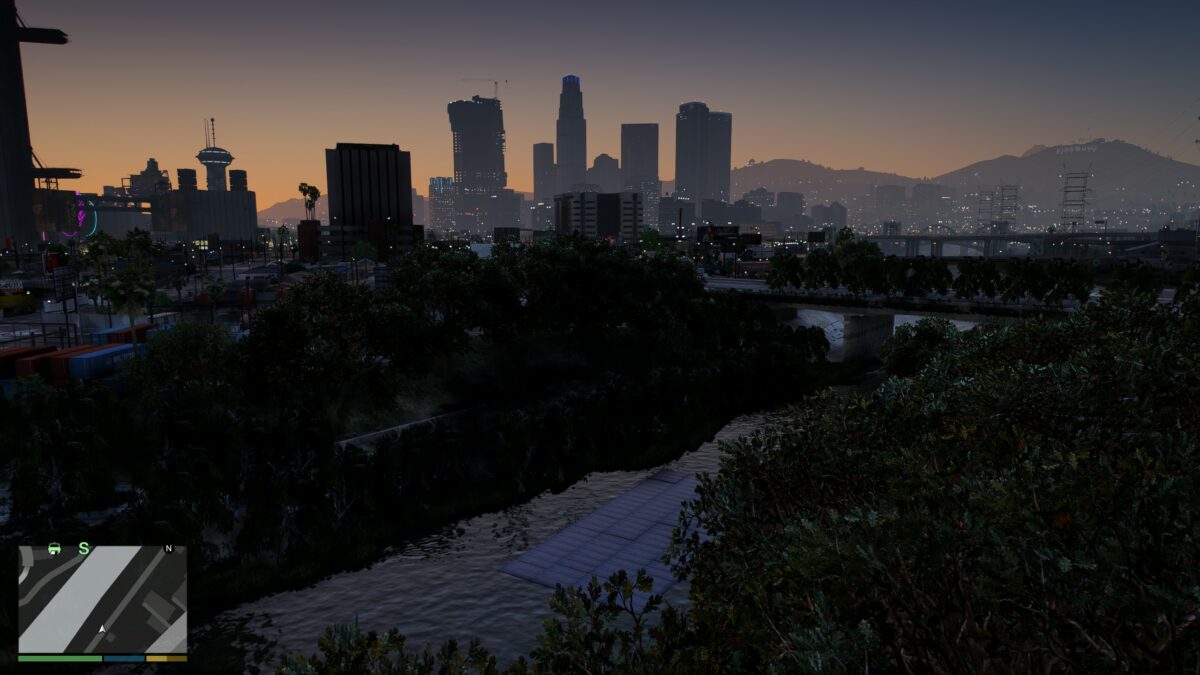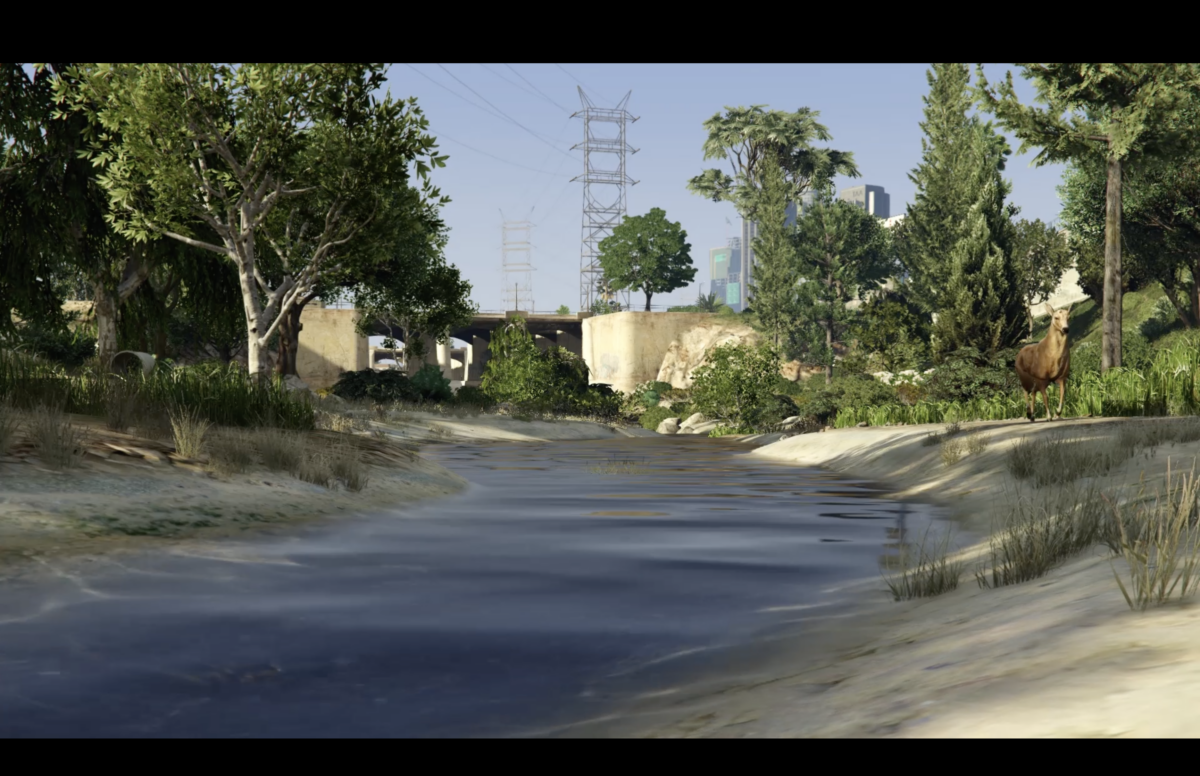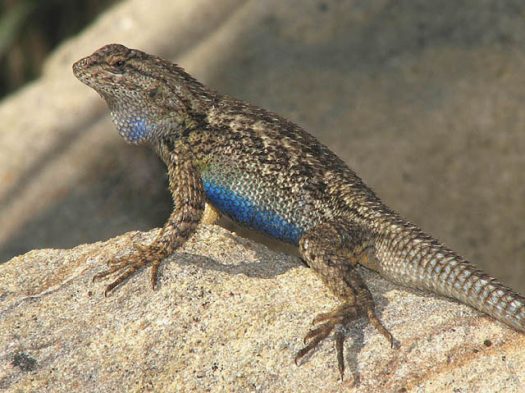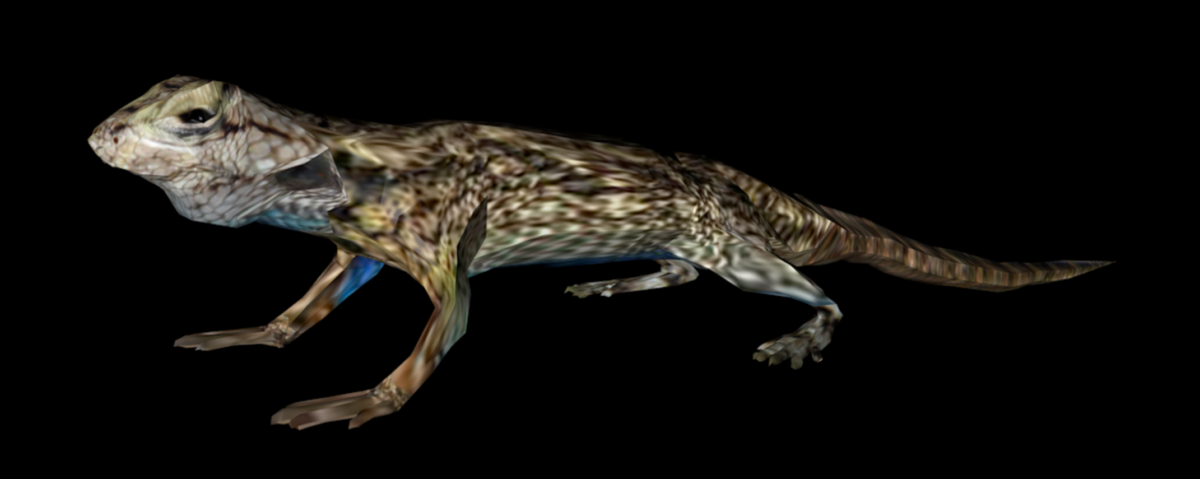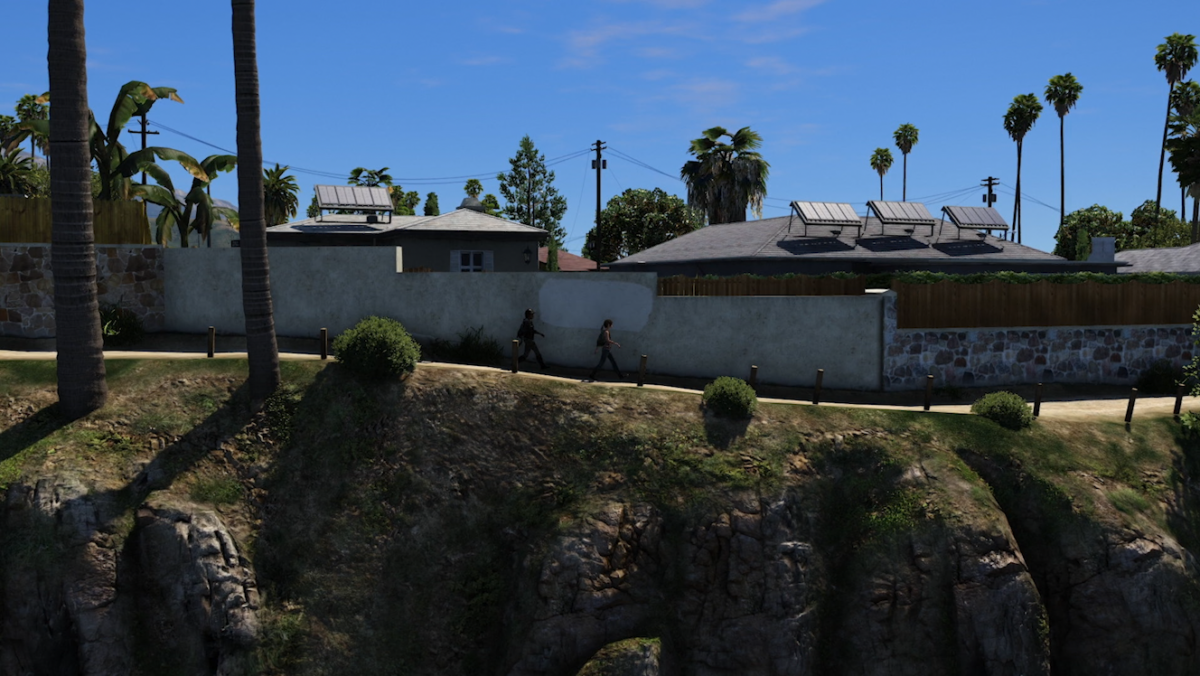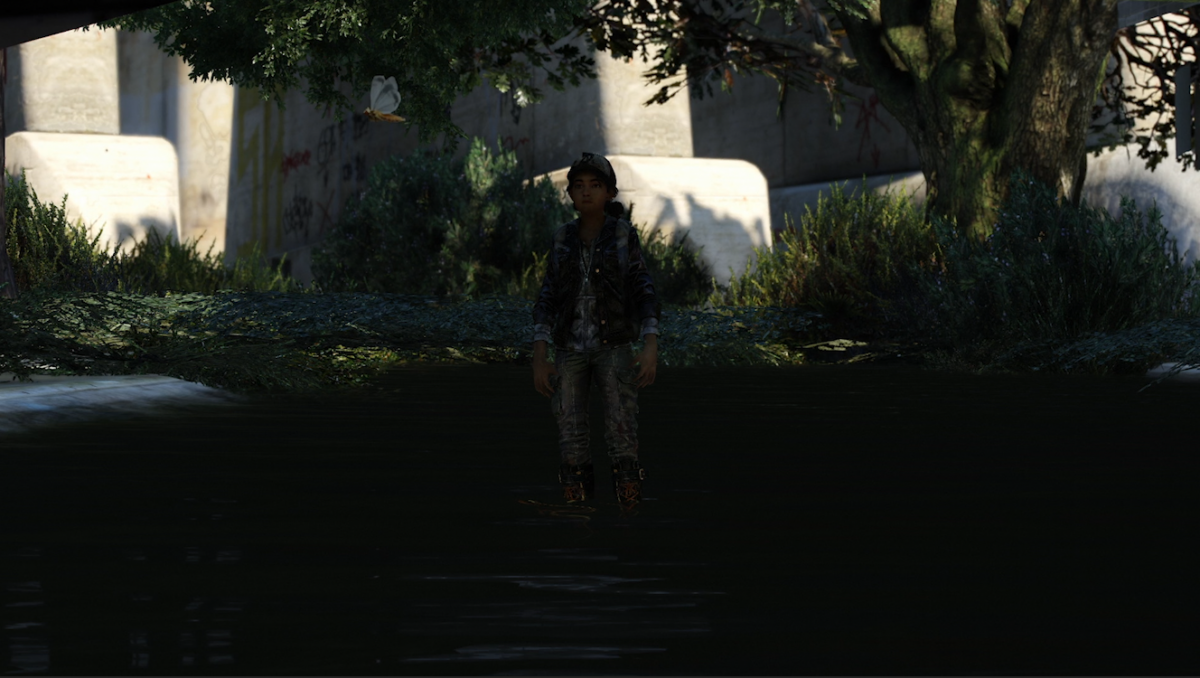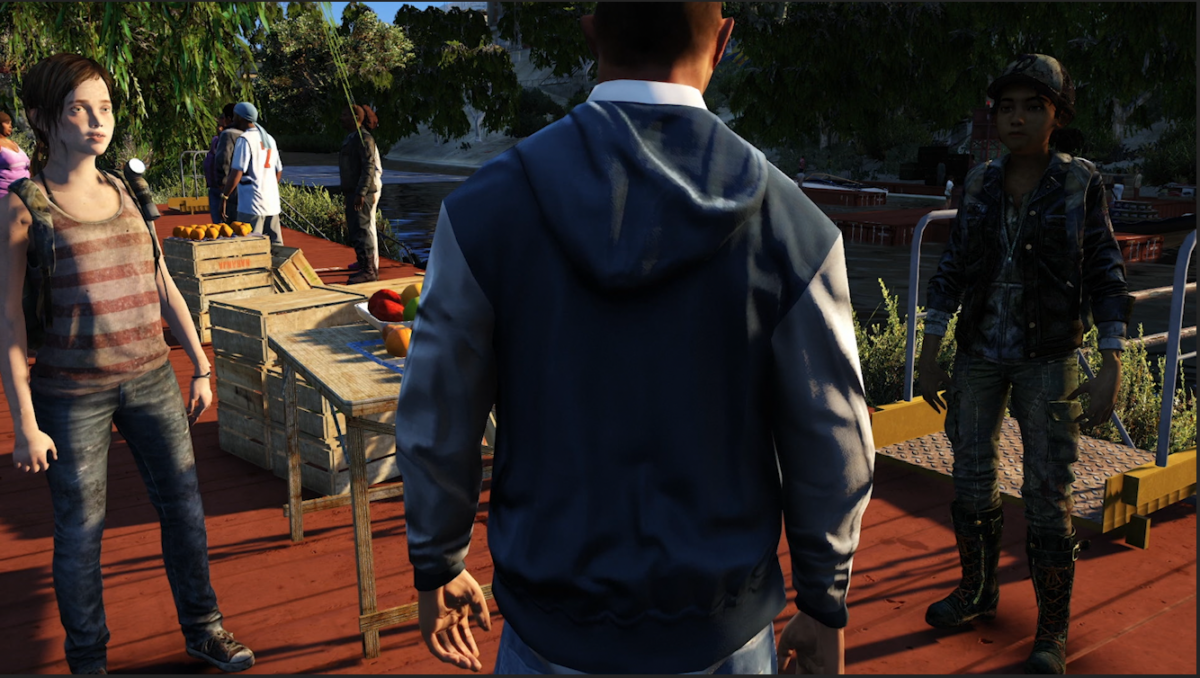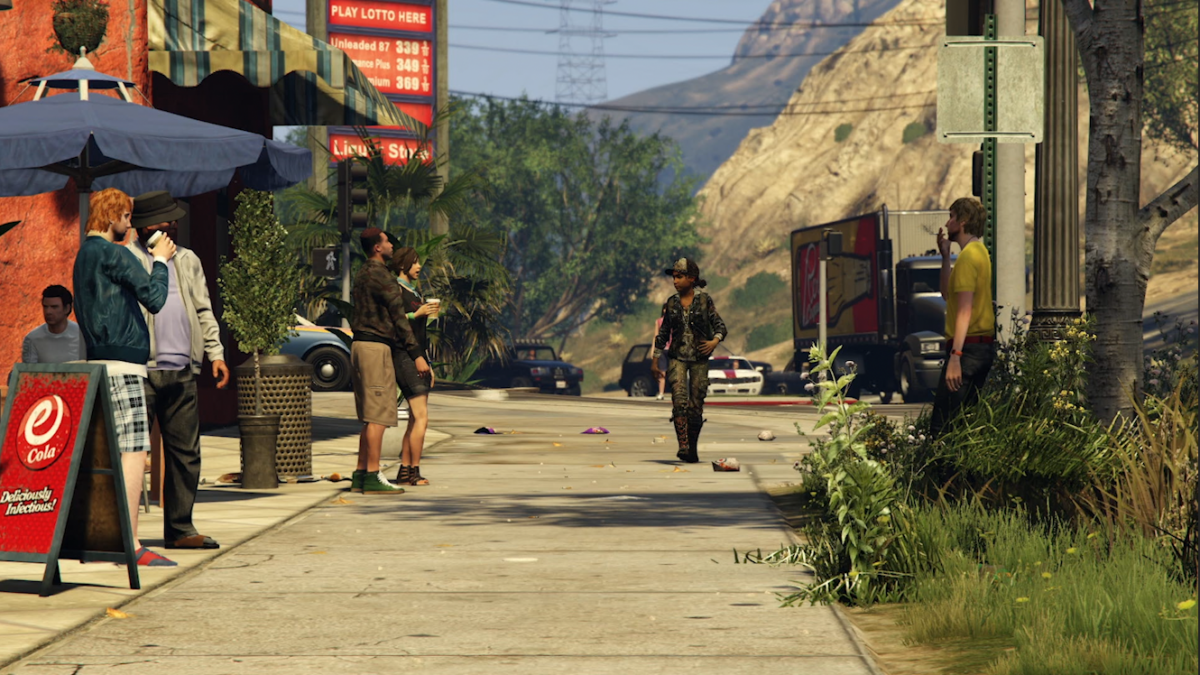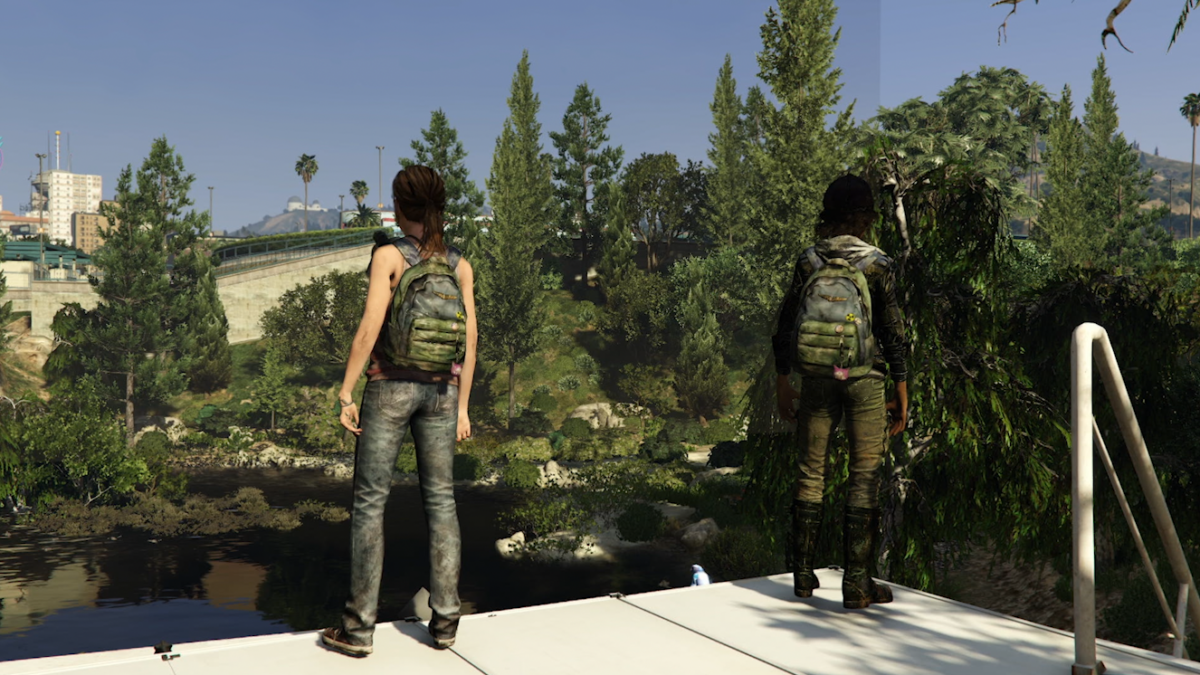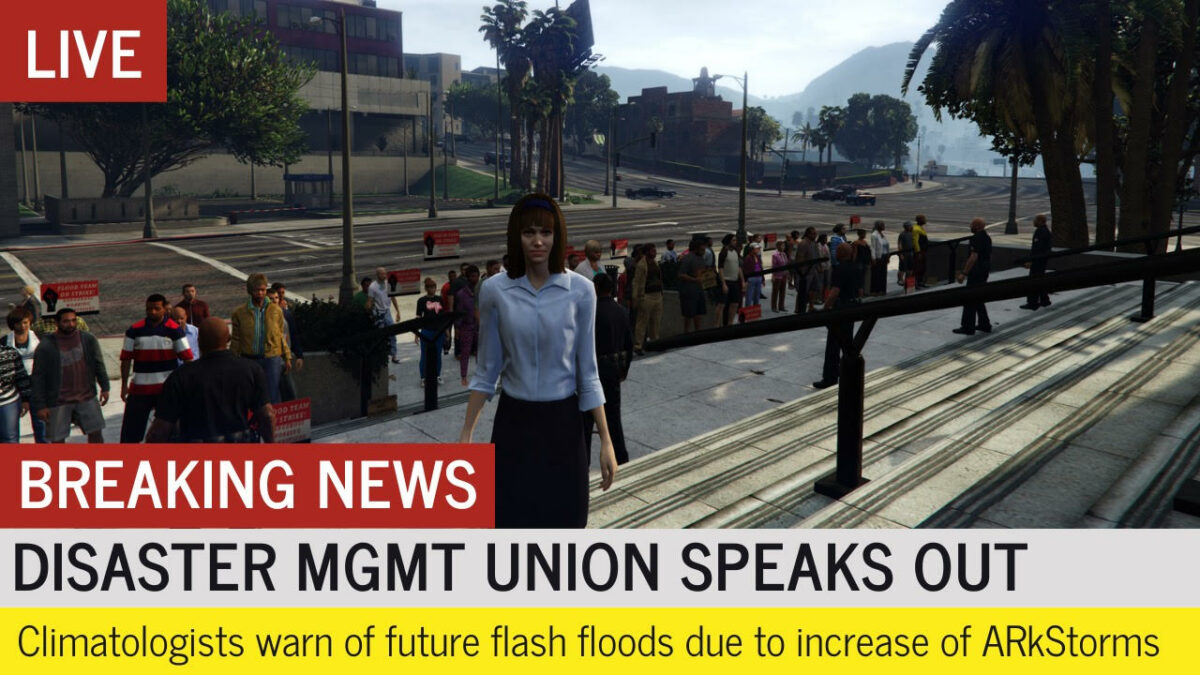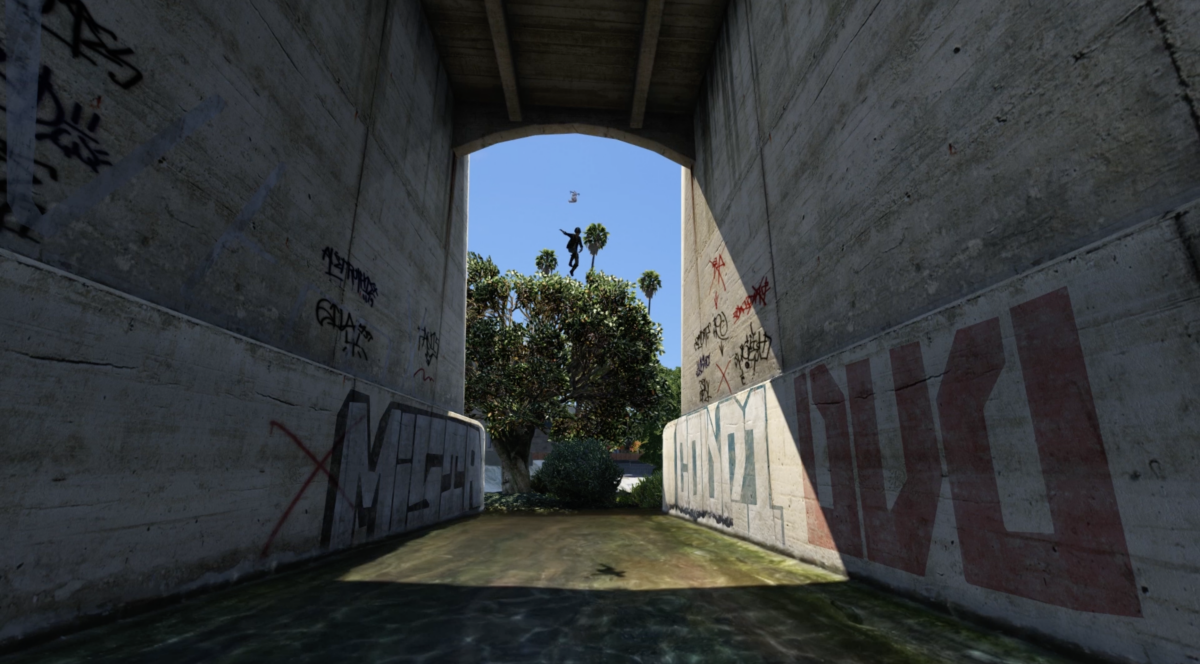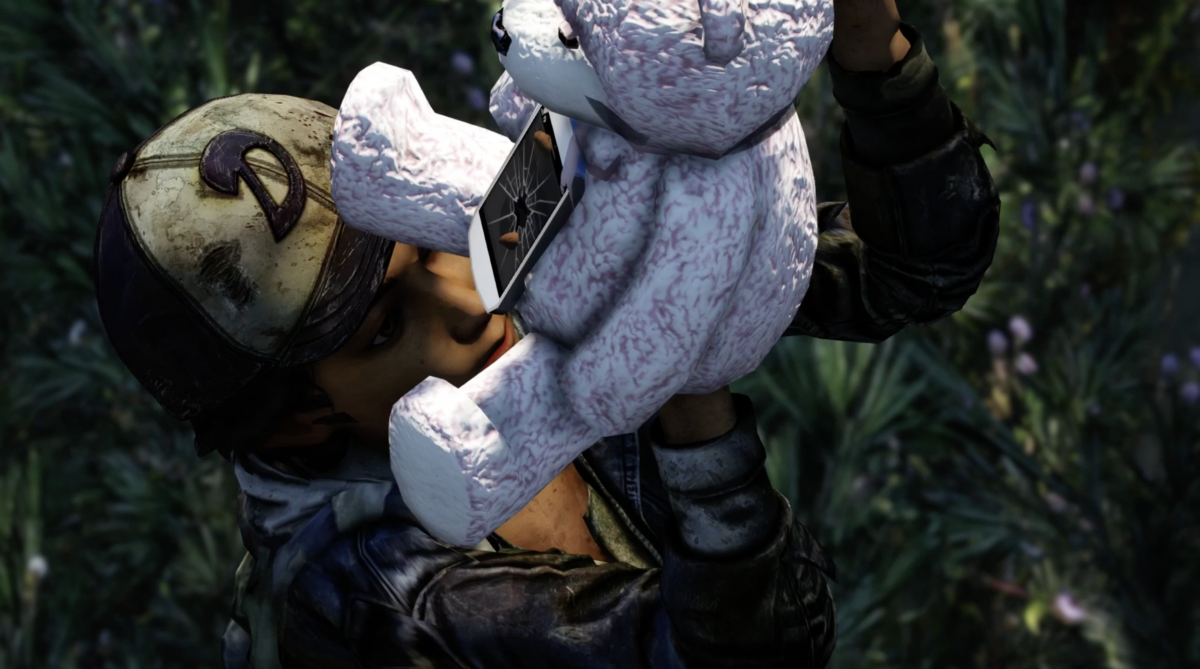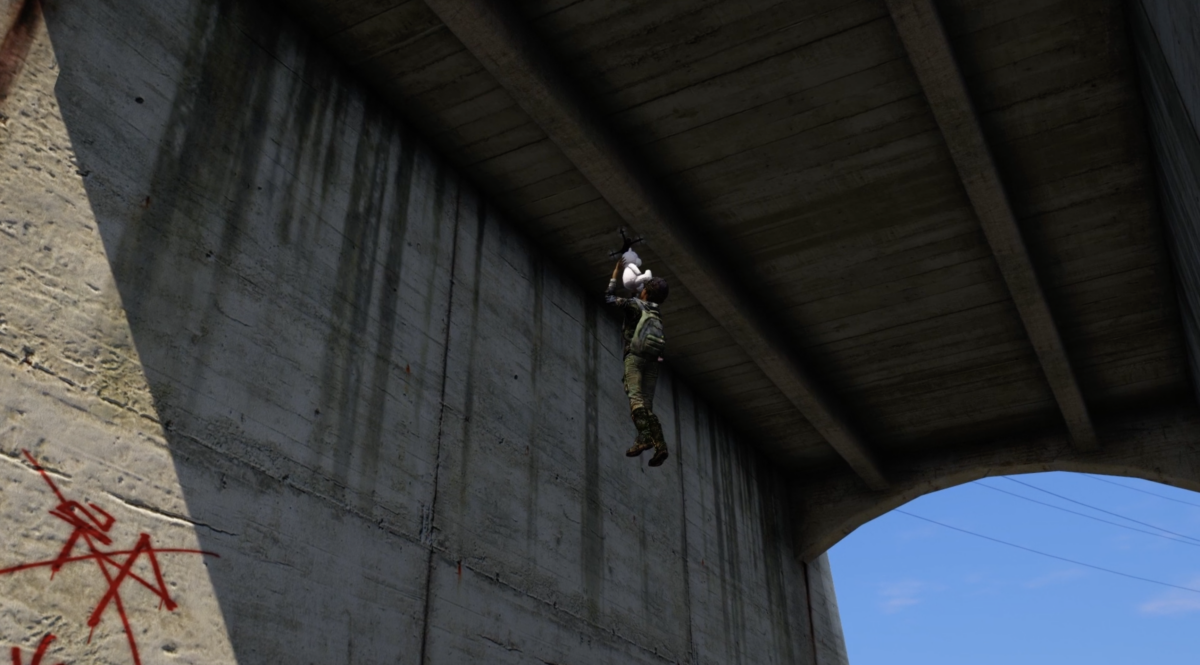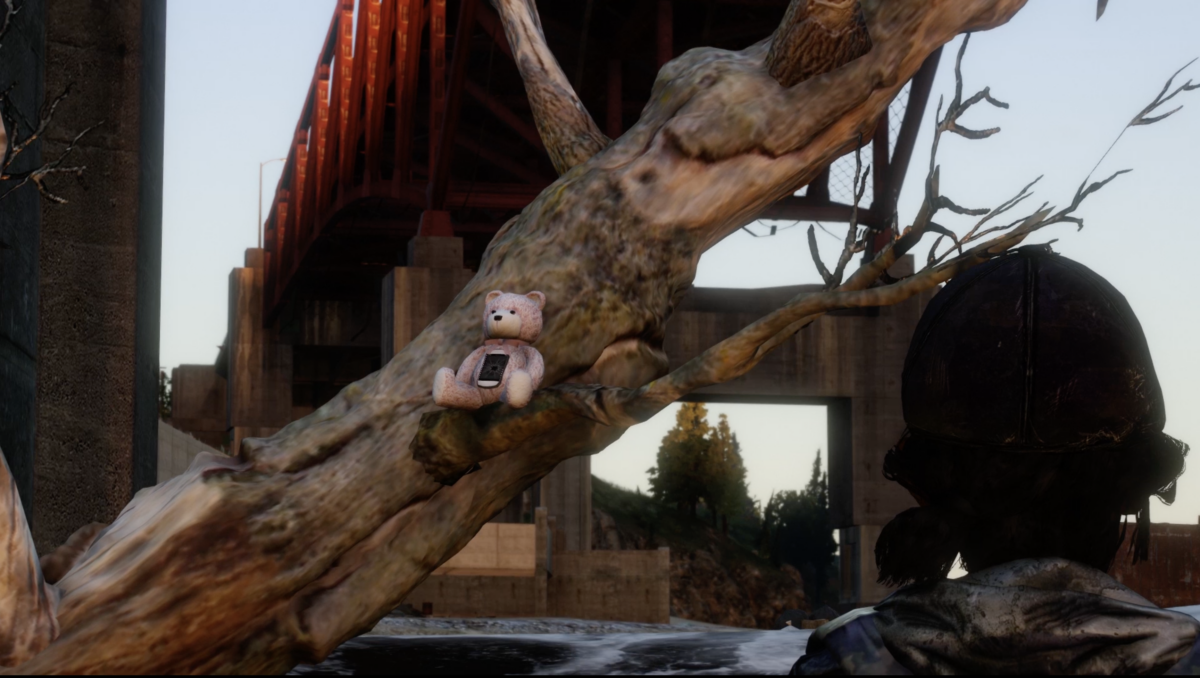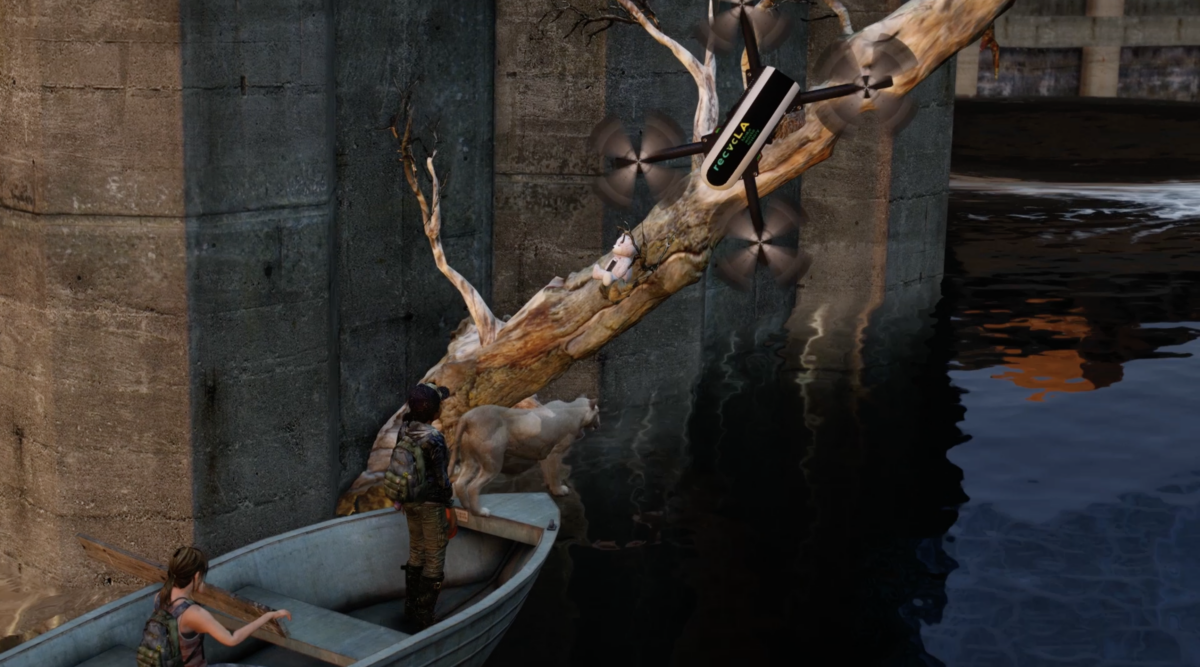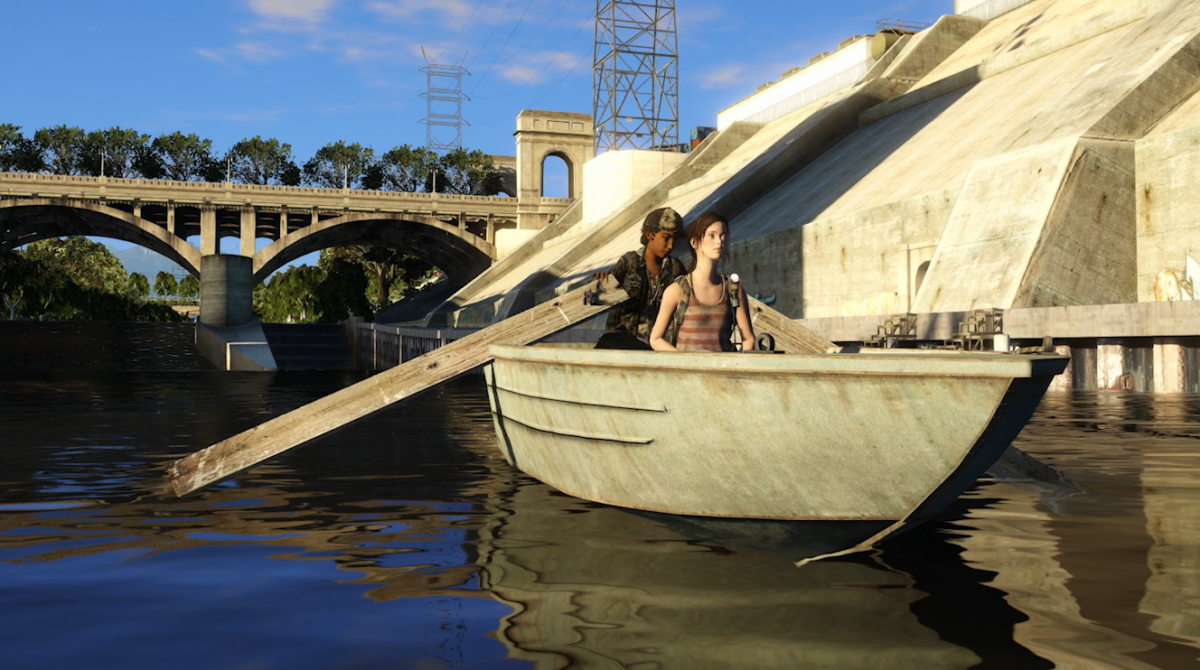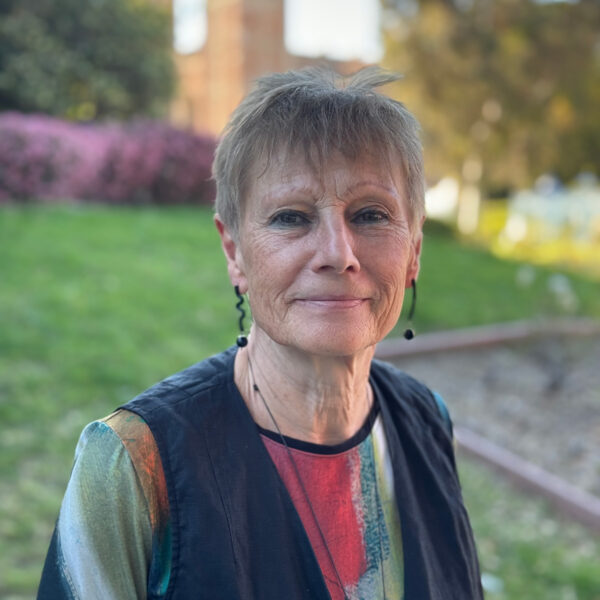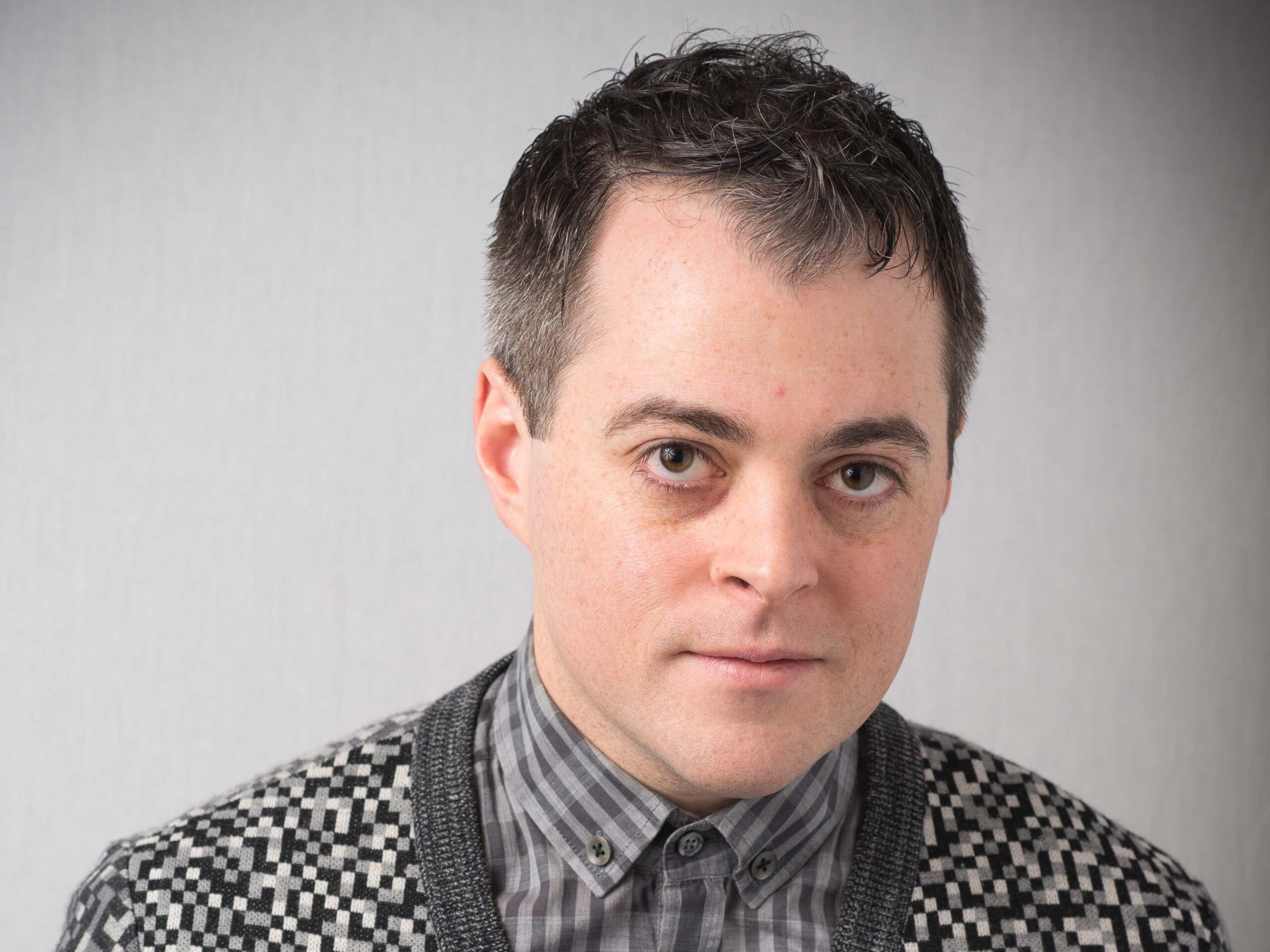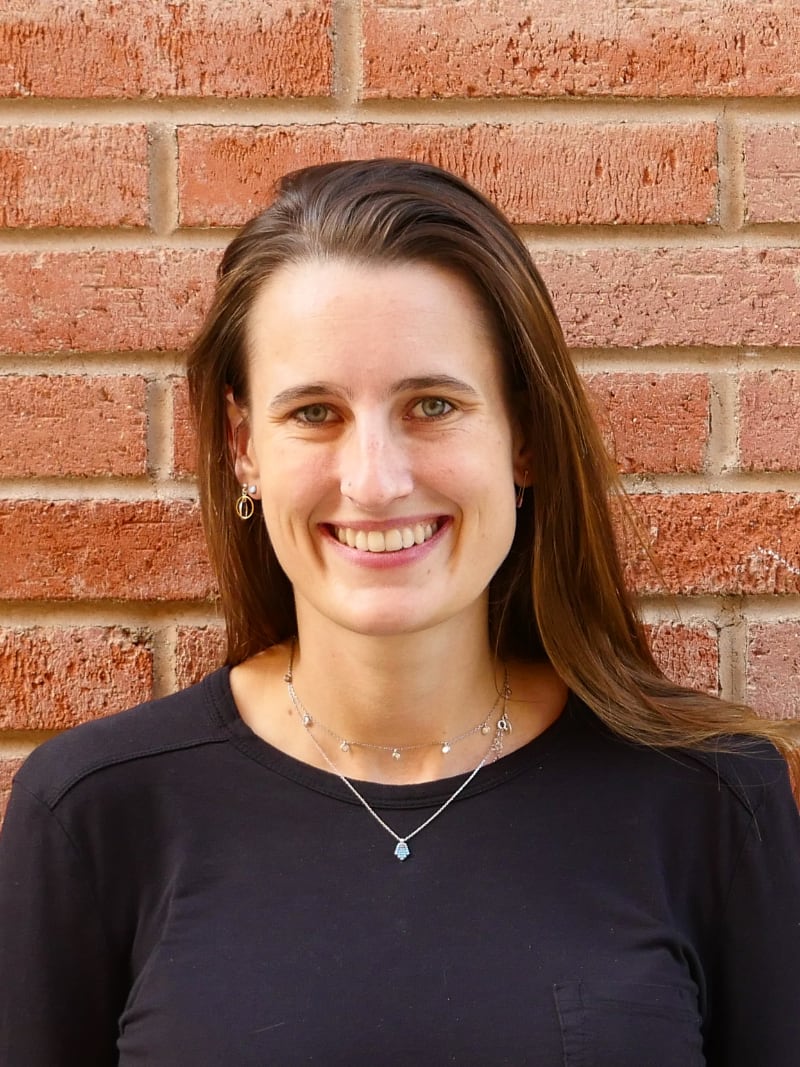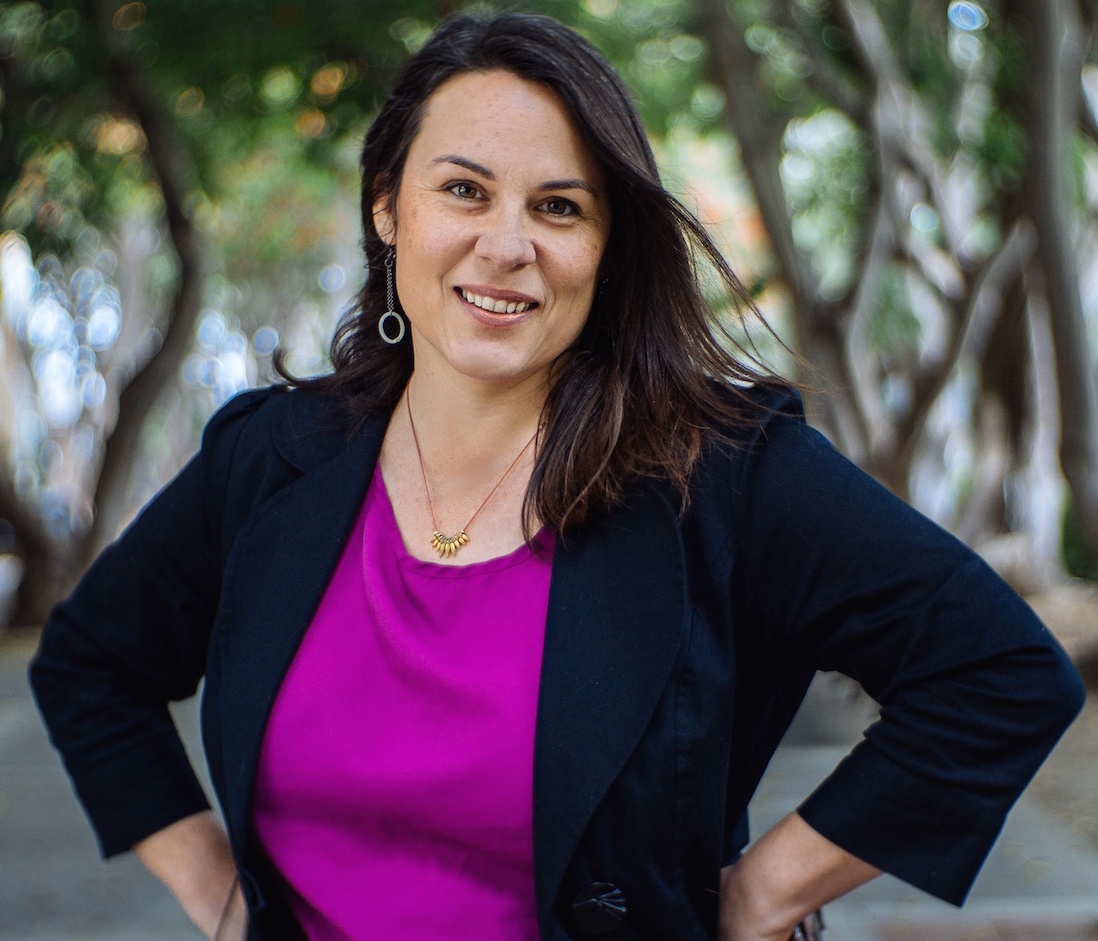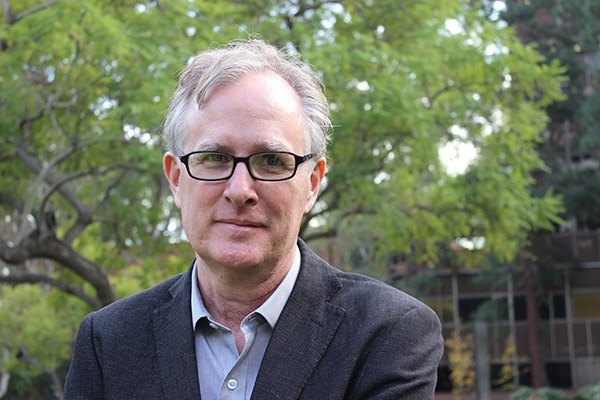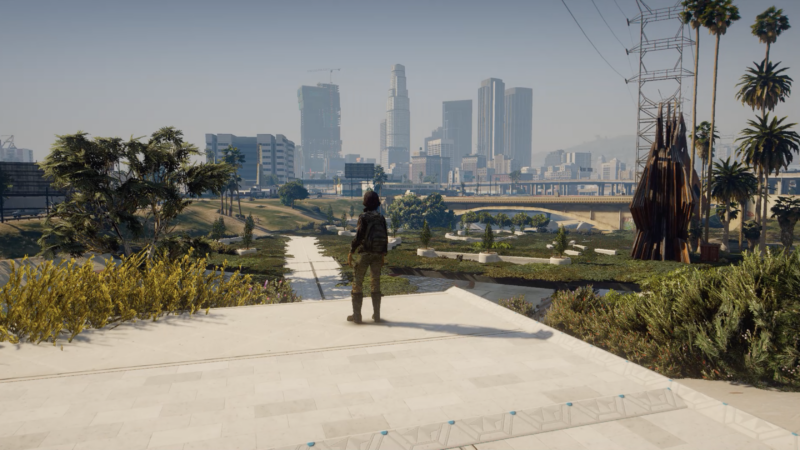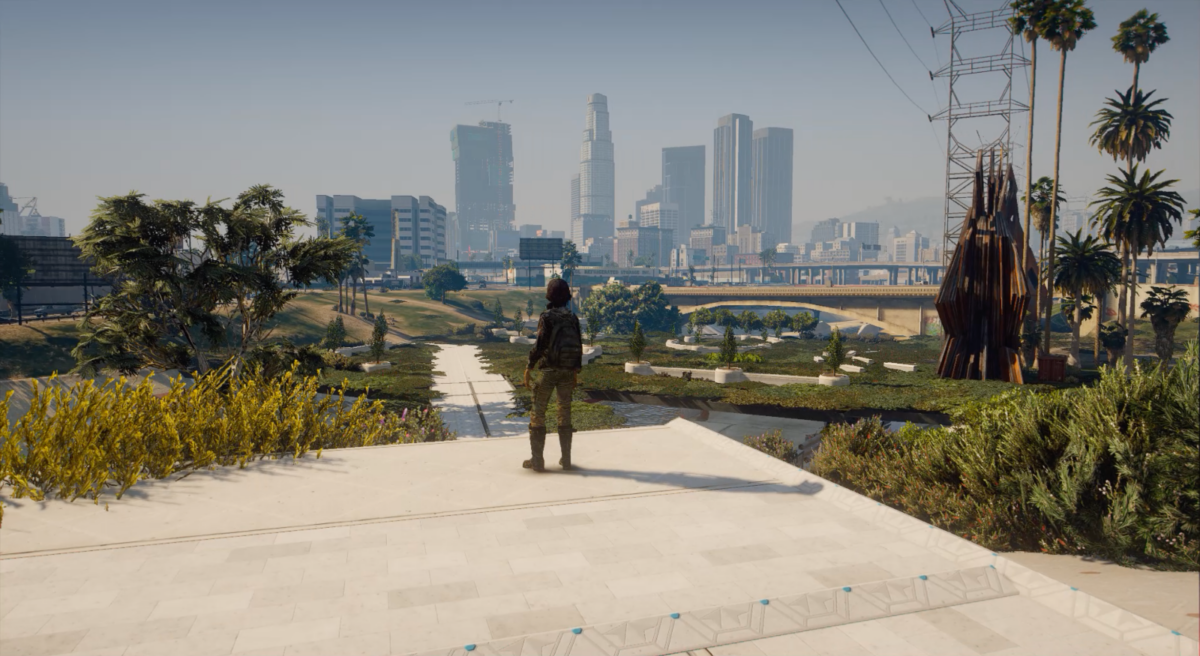
Grand Theft Eco: Environmental Futures of Los Angeles
Grand Theft Eco: Environmental Futures of Los Angeles is a creative film project that repurposes the game engine and design of the video game Grand Theft Auto V to explore possible eco-futures of Los Angeles in the year 2050.
Project Description
Grand Theft Eco develops three 30-minute animated “machinima” videos about environmental change and its consequences for a major metropolis. The animation is being developed on the basis of “modding” the storyworld of the video game Grand Theft Auto V to produce a new vision of ecological futures in Los Angeles.
The films offer an alternative to dominant dystopian narratives about climate change futures by developing nuanced storyworlds in which crucial environmental problems have been addressed, but issues of social inequality continue to trouble how the solutions are experienced. The machinima videos translate research about climate change, urban ecology, urban biodiversity, migration, and infrastructure into a popular storytelling format to inspire visions of environmental solutions and improved urban futures without naïve optimism: instead, they show how the entanglement of ecological with social problems will require continued thought and activism.
Episode 1: The iBear in the River (Quest Narrative)
The first episode of Grand Theft Eco, “The iBear in the River,” focuses on a vibrant and revitalized LA River landscape in 2050 that brings together two teenagers, Kerstin Connor and Yolanda Arellanos, in an adventurous chase to retrieve a lost electronic toy. As the two girls explore the landscapes and neighborhoods along the river, they forge a temporary friendship that persistent inequalities ultimately drive apart.
In the winter of 2050, a mega-ARkstorm leads to widespread flooding along the LA River. In the gentrified river community of Southgate, Oscar Arellanos’ maintenance crew completes clean-ups on the Connor house. His daughter Yolanda leaves behind her electronic toy-bear Manú. When she returns to retrieve him, teenager Kerstin Connor teams up with her when it drops into the river from the grip of a trash drone and is washed downstream. As the girls pass through a Gehry platform park, a farmer’s market, an urban farming area, a wildlife refuge, a fishing community, and a trash dump, they confront robots, adults, wildlife, and the river itself in a revitalized but uneven urban landscape. The girls’ unequal experiences and skills in dealing with social conflicts emerge as they confront these obstacles and form a friendship. But their bond is disrupted by a finale that highlights the enduring social and racial gaps between them.
Premiere screening on Monday, May 6
Episode 2: Dark Olympics (Film Noir)
Los Angeles is scheduled to host the 2050 Summer Olympics, the “first solar games” in a city whose entire public electricity grid has been shifted to renewable resources. A month ahead of the opening ceremony, a major blackout blankets all except the neighborhoods powered by the private company Eureka energy. It forces LADWP Inspector Ray Handler to investigate the cause amidst demonstrations of the Nolympics movement, which protests waste of public money, and of labor organizers who advocate against robot work. Handler takes on the role of detective, tracking potential saboteurs, and discovers that one of his LADWP coworkers is in cahoots with Allan McKenzie, the CEO of Eureka Energy, who has planted the virus to show that the public grid is unreliable and should be taken over by Eureka to ensure smooth Olympics. Handler finds himself unable to resolve the conflict over public and private control of alternative energy.
Episode 3: Coyote Heist (Heist Narrative)
LA in 2050 is a haven of biodiversity. Female coyote Zoë strays into a homeless encampment on the outskirts of Pasadena, where she falls in love with the border collie Bowser. Bowser’s owner, Margot, and Zoë experience in different ways how conflicts over who belongs into urban communities play out. During an encampment sweep, Bowser is picked up by Animal Control, and Zoë enlists the help of urban birds and rodents to help track him down to the animal shelter and later the anti-coyote activist who has adopted him, Stephanie. The multispecies team invades Stephanie’s property, overcomes her electric surveillance during the pre-Olympic blackout, and takes Bowser back to Margot. The final scene confronts Zoë’s domestic family with her old pack in a brief encounter between Pasadena’s new and old multispecies communities.
Project Goals
The animation series offers an alternative to dominant dystopian narratives about climate change futures by developing nuanced storyworlds in which crucial environmental problems have been addressed, but issues of social inequality continue to trouble how the solutions are implemented and experienced. The machinima videos translate research about climate change, urban ecology, urban biodiversity, migration, and infrastructure into a popular storytelling format to inspire visions of environmental solutions and improved urban futures without naïve optimism: instead, they show how the entanglement of ecological with social problems will require continued thought and activism. We plan to use the series as a pedagogical tool for classes at UCLA. Once the first episode is complete, we will also consult on digital distribution with major networks.
Screenshot gallery
